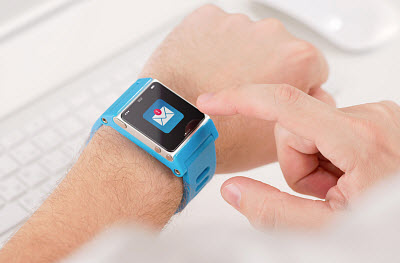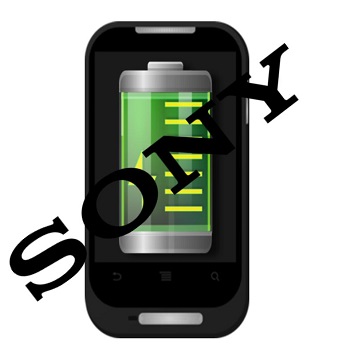Some predictions are starting to suggest that wearables are going to start disappearing next year.
Venture capital partner, Rick Yang, from New Enterprise Associates has released a prediction that the year ahead will be a critical one in wearable technology in which many of the devices we currently see on the market will be dying off forever.
Yang spoke specifically of the first generation devices that laid a foundation but that are rapidly being replaced.
According to the prediction from Yang, first generation wearable technology devices such as Google Glass, the Apple Watch and even the original Fitbit and Jawbone fitness trackers were vital to opening up the door to a spectrum of new and far more fashionable gadgets. He explained that “What that means is the wearable that integrates very directly into your everyday life, into your existing fashion sense to the extent that nobody knows you’re wearing a wearable.”
Yang added that the later generations of wearable technology feel more like an accessory than tech.
 He said that with the maturity of the market, luxury brands are going to start coming out with their own versions of smartwatches like the Apple Watch. This is already being seen in some important announcements of partnerships between luxury watchmakers and design houses that are working with tech giants to come out with appealing fashion accessories that have the features expected from wearables.
He said that with the maturity of the market, luxury brands are going to start coming out with their own versions of smartwatches like the Apple Watch. This is already being seen in some important announcements of partnerships between luxury watchmakers and design houses that are working with tech giants to come out with appealing fashion accessories that have the features expected from wearables.
Yang said that “At the premium end of the spectrum, it’s something like a Tag Heuer, right? It looks like a Tag, but it provides much more functionality than a Tag.” He also pointed to Athos, the startup supported by venture capital, which develops and manufactures workout clothes with embedded sensors for smart features. These smart clothes track heart and respiration rate, muscle groups and other health and performance issues.
To Yang, the most important feature of wearable technology in the future will be that it will function without feeling like a device is actually being worn. That way, a user can continue with his or her regular routines without having to think about whether or not gadgets are involved.
The company is hoping to help to overcome a battery life struggle that is holding back the mobile industry.
As smartphone manufacturers increasingly show that they are unwilling to produce thicker devices in order to accommodate longer lasting smartphone batteries, Sony has taken on the task of developing a power source that will last about forty percent longer than the current average without requiring more space.
The majority of consumers are required to charge their smartphones every night to accommodate the next day’s use.
A new announcement has showed that Sony is coming up with considerably more energy efficient types of smartphone batteries using technology that should become available in the consumer market by 2020. This new tech uses magnesium and sulfur based electrodes in order to form a power source that will hold about 40 percent more power than Li-ion battery cells of the same physical size.
Researchers have been looking into smartphone batteries based on lithium-sulfur for some time now.
 However, the problem that has been faced is in making a stable environment in which to contain the sulfur. Without accomplishing that goal, the sulfur breaks down very quickly and once it has degraded it will not perform as a component of the mobile device battery. That said, based on the latest reports from Sony, it looks as though that company may have been able to come up with a new way to maintain the stability of the sulfur and, therefore, make it usable in a practical way as a part of a more powerful battery.
However, the problem that has been faced is in making a stable environment in which to contain the sulfur. Without accomplishing that goal, the sulfur breaks down very quickly and once it has degraded it will not perform as a component of the mobile device battery. That said, based on the latest reports from Sony, it looks as though that company may have been able to come up with a new way to maintain the stability of the sulfur and, therefore, make it usable in a practical way as a part of a more powerful battery.
That said, Sony has also reported that it is testing out a battery that combines sulphur and magnesium. It is believed that they are doing this because they want to overcome one of the struggles that are presented by using lithium, which is its own degradation over time, eventually turning the substance into a fire hazard. By using a rechargeable power source that does not contain lithium, it’s possible to boost the safety to consumers.
That said, after all the research Sony is doing into smartphone batteries with better performance, it could possibly be that nothing will result. However, when taking into consideration that it was Sony that came up with the Li-ion commercially viable battery in the first place, the company has shown that it knows what it is doing in that area.
 He said that with the maturity of the market, luxury brands are going to start coming out with their own versions of smartwatches like the Apple Watch. This is already being seen in some important announcements of partnerships between luxury watchmakers and design houses that are working with tech giants to come out with appealing fashion accessories that have the features expected from wearables.
He said that with the maturity of the market, luxury brands are going to start coming out with their own versions of smartwatches like the Apple Watch. This is already being seen in some important announcements of partnerships between luxury watchmakers and design houses that are working with tech giants to come out with appealing fashion accessories that have the features expected from wearables.
 However, the problem that has been faced is in making a stable environment in which to contain the sulfur. Without accomplishing that goal, the sulfur breaks down very quickly and once it has degraded it will not perform as a component of the mobile device battery. That said, based on the latest reports from Sony, it looks as though that company may have been able to come up with a new way to maintain the stability of the sulfur and, therefore, make it usable in a practical way as a part of a more powerful battery.
However, the problem that has been faced is in making a stable environment in which to contain the sulfur. Without accomplishing that goal, the sulfur breaks down very quickly and once it has degraded it will not perform as a component of the mobile device battery. That said, based on the latest reports from Sony, it looks as though that company may have been able to come up with a new way to maintain the stability of the sulfur and, therefore, make it usable in a practical way as a part of a more powerful battery.